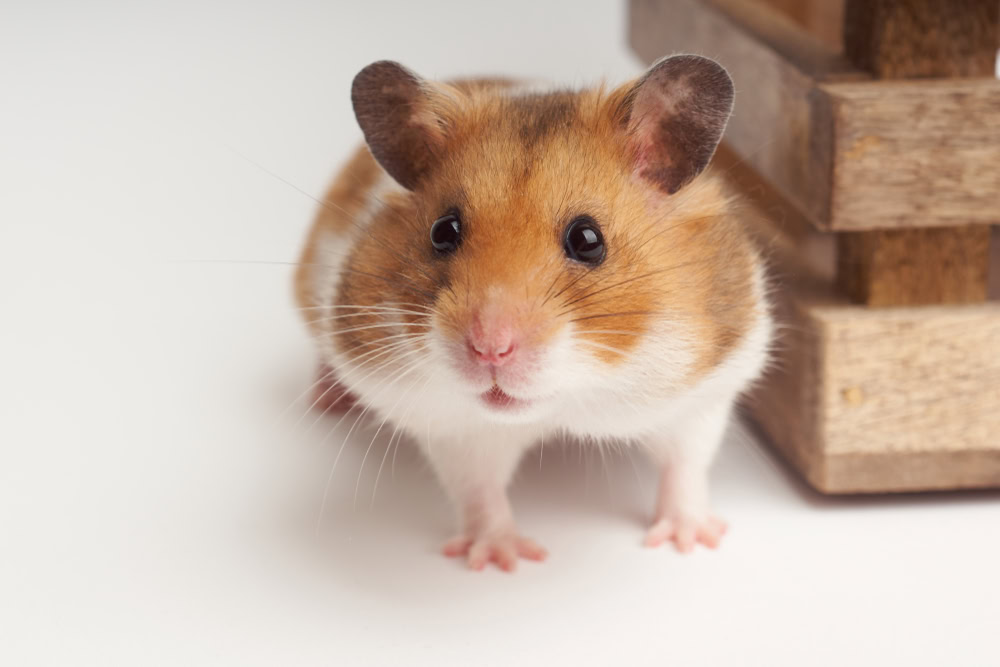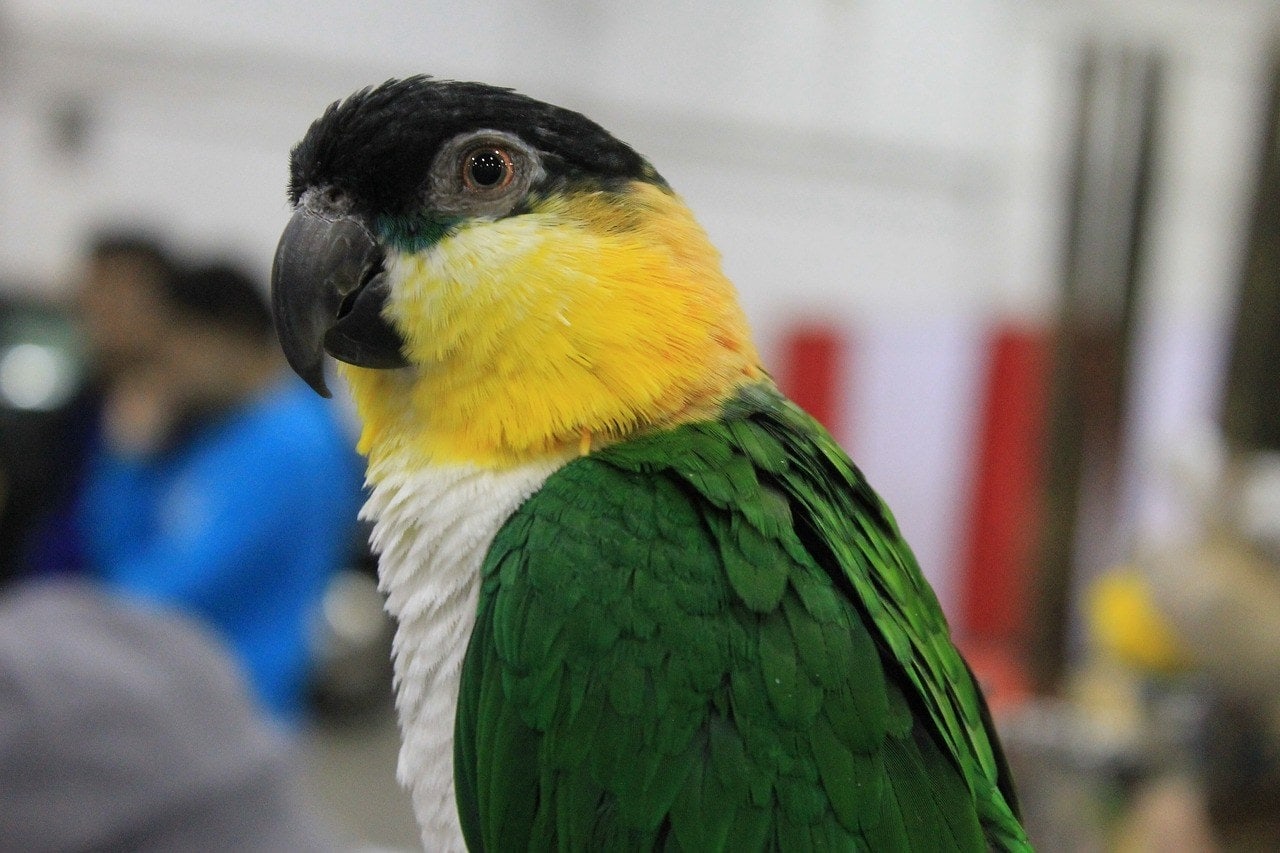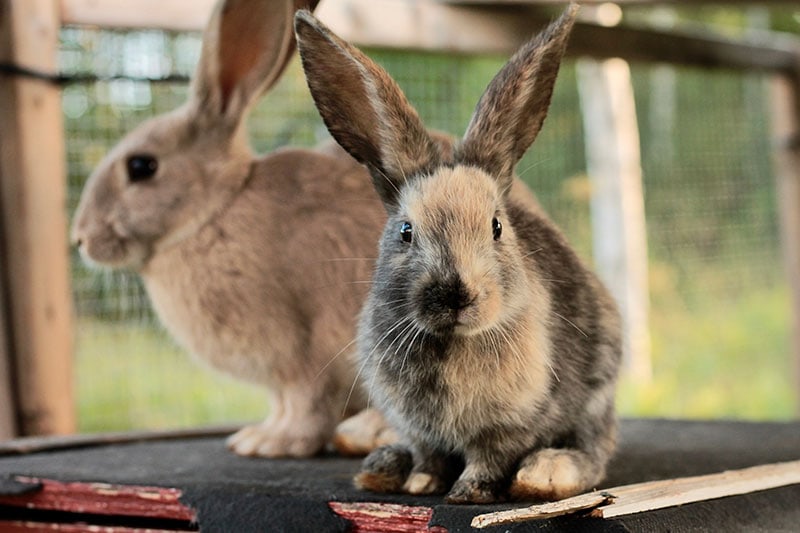Click to Skip Ahead
Syrian hamsters—also known as golden hamsters—are great pets for new owners. In fact, hamsters are among the most popular small pets in the Western world. Goldens are also quite easy to tame. Through daily handling, they will become docile and social with their human owners. This breed of hamster will often develop quirky idiosyncrasies and a personality all their own.
Breed Overview
| Length: | 5–7 inches |
| Weight: | 4–7 ounces |
| Lifespan: | 3–4 years |
| Colors: | Beige, golden brown, black, sable, cream, white, and patterned variations |
| Temperament: | Easy to tame, comfortable being handled, curious, solitary, territorial, quirky |
| Best Suited For: | Beginner pet owners |
Syrian Hamster Characteristics

Syrian Hamsters — Before You Buy
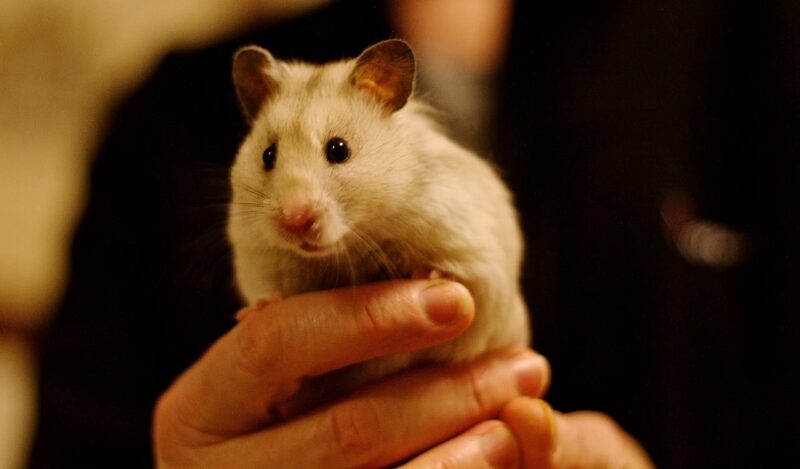
If you’re looking for a pet that’s full of life, a hamster is a good choice, particularly a Syrian hamster. They’re larger and more resilient than their dwarf cousins, allowing even young children to learn how to care for a pet. However, they’re still relatively fragile, so supervision will be needed.
Syrian hamsters are also among the most docile of hamsters and actually enjoy being held once they’ve been tamed. They will take some time to tame but will rarely bite throughout the process.
One big mistake many new owners make is not getting a big enough enclosure for their hamsters. These rodents just love to run and play! However, many of the hamster cages you’ll see available for sale are way too small and gimmicky. The more accessories they come with, the less space your Syrian hamster will have to maneuver.
Your best bet would be to opt for a bigger cage and then personalize it with toys and exercise equipment. Don’t forget to get a hamster wheel! Letting them run in this way will brighten their day and give them a way to stretch their little legs.
What’s the Price of Syrian Hamsters?
The price of a Syrian hamster will range between $5 and $20, depending on the color variation, hair length, and other defining factors. The biggest cost of owning a hamster will come from purchasing proper housing, toys, and food.

Temperament & Intelligence of the Syrian Hamster
Syrian hamsters share quite a few traits with other hamster breeds. They are nocturnal critters that like to spend most of their day sleeping. When evening comes, they start getting active, so be mindful about where you’ll store their housing.
They’re relatively clever. They enjoy running around in tube mazes and other tunnel toys. When it comes to going to the bathroom, they’ll usually choose a singular location farthest away from their sleeping area, meaning you won’t have to frequently do full cage cleanouts.
Are These Hamsters Good for Families? 👪
Syrian hamsters are great pets for families, especially those with smaller children. They’re great for teaching younger kids the responsibilities of having a pet because of how low-maintenance they are. Also, hamsters can teach children other core virtues, such as patience and gentleness.
Does This Breed Get Along With Other Pets? 🐶 😽
No. Being a natural prey animal, the Syrian hamster is rather skittish toward most larger animals, including dogs, cats, and unfamiliar humans.
They also don’t get along with other hamsters. Syrian hamsters are extremely solitary and territorial. This means they prefer to be alone and away from their peers. If you are breeding hamsters, they need to be separated before maturity. Hamsters have been known to fight to the death when left together.
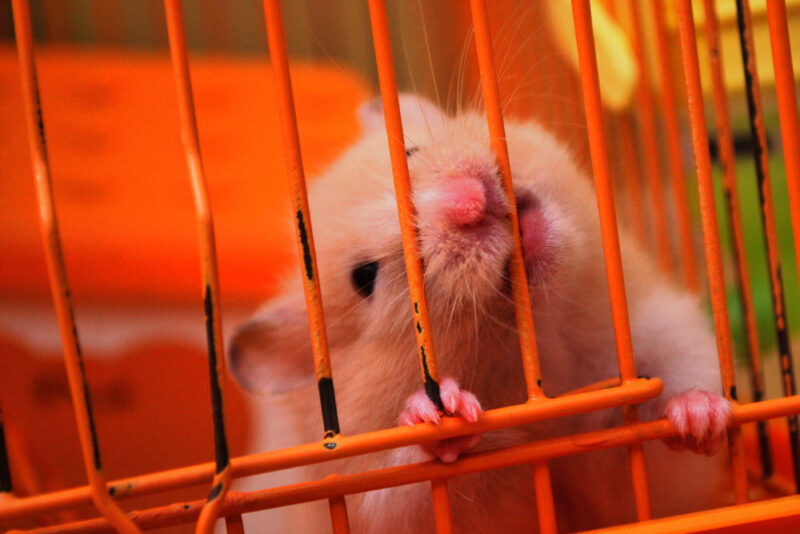

Things to Know When Owning a Syrian Hamster
In order to be a proper owner for your new Syrian hamster, there are a few things you’ll need to know about.
Food & Diet Requirements
Syrian hamsters are omnivores and require a special mix of food in order to get their full nutrition. You can also give them nuts, grains, and seeds as nice treats. These hamsters also enjoy fruits and vegetables, including apples, broccoli, pears, carrots, and cauliflower. Remember, they’re omnivores, which means they eat some meat protein too. Toss in a cricket or a piece of hard-boiled egg, and watch them go to town.
While bigger than dwarf hamster varieties, Syrian hamsters are still small animals. You shouldn’t give them too much food. A teaspoon of food each day is all your golden hamster really needs to be healthy and happy. Overfeeding can lead to obesity and other health problems.
Exercise
Hamsters need plenty of exercise when they’re awake. The best way to do this is to maximize the amount of space they have. Pick up a large cage or habitat for them to live in, and only put in a few toys. One toy that every Syrian hamster should have is an exercise wheel. These critters can run up to 9 miles a day!
Training
Training your Syrian hamster isn’t like training a dog, but they can learn some simple tricks. If you interact with your hamster regularly and call them by name, they can recognize their own name. They can also litter train themselves and establish individual routines.
Grooming
It’s not too difficult to groom a hamster. They typically self-groom and are relatively low-maintenance. Over-grooming them can actually cause your pet to lose some of their natural oils that keep their coat looking great. However, if you have a long-haired variety of Syrian hamster, you’re going to need to help them out every now and then. This can be done with a small brush or a fine-toothed comb.
Hamsters also have hypsodont teeth. This means they just keep growing. You’ll need to supply your pet with plenty of wood or other appropriate chew sticks in order to keep them trimmed. If the teeth do get too long, take your hamster to the vet to have them taken care of.
Health and Conditions
When compared to other hamster breeds, Syrian hamsters are hardy little creatures. However, there are a few conditions that you should keep an eye out for.
First, older hamsters are known to develop tumors. These can be either malignant or benign. If you notice any lumps on your hamster’s body, contact your vet in order to discuss further options.
Second, hamsters can develop a condition known as wet tail. It’s actually a bacterial infection that affects the hamster’s GI tract. It can cause severe diarrhea and soft, watery droppings, hence the name. This can be a lethal condition. However, vets can treat it with antibiotics.
Less serious is the issue of ear and fur mites, which are exceptionally easy to treat. Mites can be prevented through regular bedding changes or the use of sterile bedding. Normally, a topical ointment, dust, or shampoo is prescribed for treatment.
- Mites
- Tumors
- Wet tail
Male vs. Female
There are unique differences when it comes to male and female Syrian hamsters. The males tend to be a bit more laidback and easy-going. The females can get quite spunky and really bring out the quirky personalities that this breed is known for. Also, females are commonly larger than males and smellier because they go into heat every few days.


3 Little-Known Facts About Syrian Hamsters
1. All Syrian Hamsters Can Be Derived From a Single Mother
In 1930, Jewish scientist Israel Aharoni captured a female along with 12 of her pups outside of Aleppo, Syria. After a rough start in captivity, they began to breed. Now, all domestic Syrian hamsters can be traced back to the originally captured female.
2. Syrian Hamsters Come in Long-Haired Varieties
Not all Syrian hamsters are short-haired. In fact, some of them can grow long, silky coats. This is most common in male hamsters due to the increased production of testosterone. These coats can even come complete with light-colored skirts encompassing their backsides.
3. Syrian Hamsters Go by Many Different Names
Syrian hamsters are named after their main place of origin, but they’ve also been called many other things. Teddy bear hamsters, golden hamsters, and short-hair hamsters are just a few of the more common names. All-black Syrian hamsters also go by black bear hamsters.
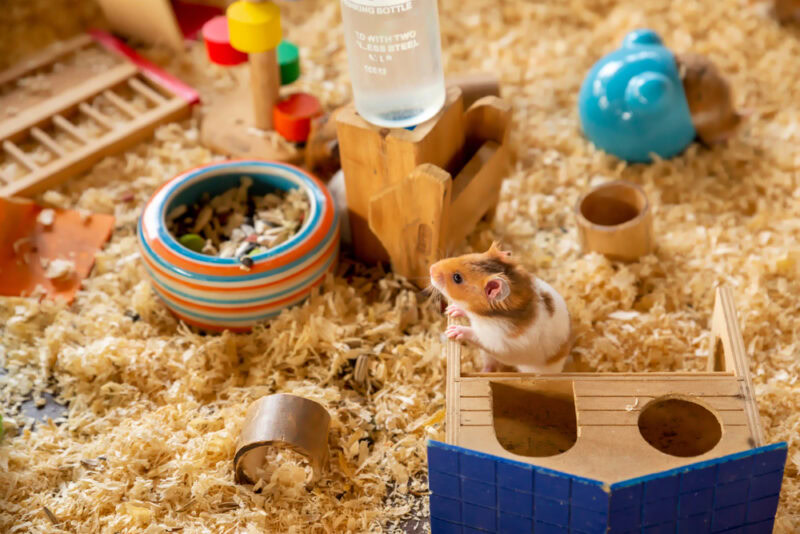

Final Thoughts
Syrian hamsters can make awesome introductory pets for new owners, adults and children alike. Their docile nature toward humans makes them easy to get along with. The two biggest problems you’ll encounter with Syrian hamsters in your daily life will be the nocturnal habits of these animals and their extreme territorialism. If you are looking to own multiple hamsters, this is not the breed for you.
Remember, like with any other hamster breed, you need to start slow with them. Hamsters, by nature, are prey animals. Quick movements, loud noises, and any other sudden changes in the atmosphere can startle them.
But this shouldn’t discourage you from owning a Syrian hamster. They make great pets and are fabulous additions to your family.
Featured Image Credit: Johannes Menge, Shutterstock
